Refine search
Actions for selected content:
240941 results for key questions in second language acquisition
Title match
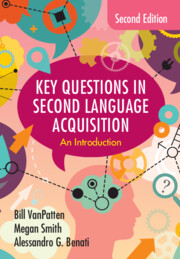
Key Questions in Second Language Acquisition
- An Introduction
-
- Published online:
- 11 April 2025
- Print publication:
- 17 April 2025
-
- Textbook
- Export citation
Title match

Key Questions in Second Language Acquisition
- An Introduction
-
- Published online:
- 30 November 2019
- Print publication:
- 05 December 2019
-
- Textbook
- Export citation
Second language acquisition of English questions: An elicited production study
-
- Journal:
- Applied Psycholinguistics / Volume 35 / Issue 6 / November 2014
- Published online by Cambridge University Press:
- 28 January 2013, pp. 1055-1086
-
- Article
- Export citation
Second language acquisition research and the second language acquisition of French
-
- Journal:
- Journal of French Language Studies / Volume 2 / Issue 1 / March 1992
- Published online by Cambridge University Press:
- 10 October 2008, pp. 97-121
-
- Article
- Export citation
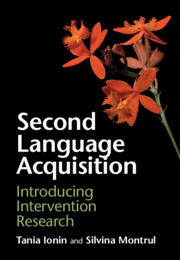
Second Language Acquisition
- Introducing Intervention Research
-
- Published online:
- 03 February 2023
- Print publication:
- 26 January 2023
-
- Textbook
- Export citation
7 - Second language acquisition
-
-
- Book:
- Linguistics: The Cambridge Survey
- Published online:
- 03 February 2010
- Print publication:
- 21 April 1988, pp 194-209
-
- Chapter
- Export citation
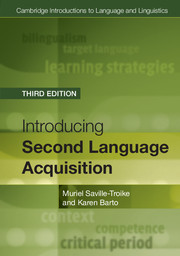
Introducing Second Language Acquisition
-
- Published online:
- 28 May 2018
- Print publication:
- 15 December 2016
-
- Textbook
- Export citation
14 - Second Language Acquisition
-
- Book:
- The Study of Language
- Published online:
- 09 November 2022
- Print publication:
- 10 November 2022, pp 228-243
-
- Chapter
- Export citation
13 - Second Language Acquisition
- from Part 6 - Language Acquisition
-
-
- Book:
- Introducing Linguistics
- Published online:
- 22 April 2021
- Print publication:
- 21 January 2021, pp 460-498
-
- Chapter
- Export citation
5 - Second Language Acquisition
- from Part I - Language in Cognition and Culture
-
-
- Book:
- The Cambridge Handbook of Cognitive Linguistics
- Published online:
- 01 June 2017
- Print publication:
- 01 June 2017, pp 73-90
-
- Chapter
- Export citation
Chapter 12 - Second language acquisition
-
-
- Book:
- The Cambridge Guide to Teaching English to Speakers of Other Languages
- Published online:
- 07 September 2010
- Print publication:
- 15 February 2001, pp 87-92
-
- Chapter
- Export citation
15 - Second Language Acquisition
- from Part I - Primary Chapters
-
- Book:
- How Languages Work
- Published online:
- 09 September 2021
- Print publication:
- 08 November 2018, pp 366-386
-
- Chapter
- Export citation
13 - Second language acquisition
-
- Book:
- An Introduction to Language and Linguistics
- Published online:
- 28 May 2018
- Print publication:
- 04 September 2014, pp 445-476
-
- Chapter
- Export citation
8 - Second-language acquisition
-
- Book:
- Language Contact and Bilingualism
- Published by:
- Amsterdam University Press
- Published online:
- 21 January 2023
- Print publication:
- 01 January 2006, pp 82-100
-
- Chapter
- Export citation
4 - Second-language learning and second-language acquisition
-
- Book:
- Native Speakers and Native Users
- Published online:
- 05 August 2013
- Print publication:
- 01 August 2013, pp 36-51
-
- Chapter
- Export citation
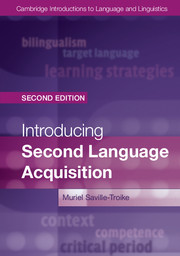
Introducing Second Language Acquisition
-
- Published online:
- 05 June 2012
- Print publication:
- 05 April 2012
-
- Book
- Export citation
2 - Second Language Acquisition
-
- Book:
- A Practical Guide to Second Language Teaching and Learning
- Published online:
- 03 May 2024
- Print publication:
- 30 May 2024, pp 22-46
-
- Chapter
- Export citation
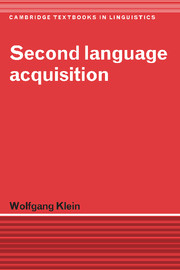
Second Language Acquisition
-
- Published online:
- 05 June 2012
- Print publication:
- 23 January 1986
Second-Language Acquisition
-
- Journal:
- Annual Review of Applied Linguistics / Volume 10 / March 1989
- Published online by Cambridge University Press:
- 19 November 2008, pp. 122-134
-
- Article
- Export citation
